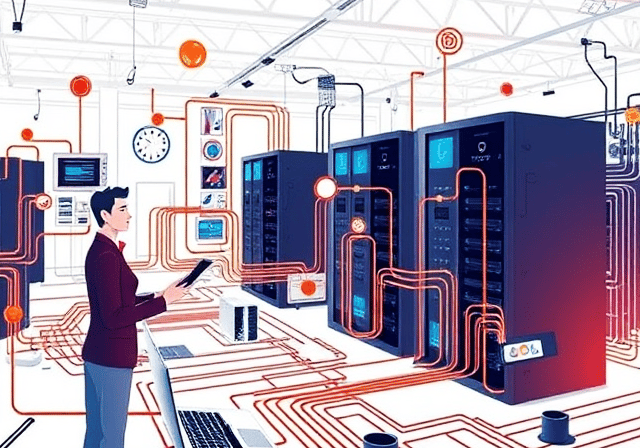A comprehensive corporate IT infrastructure training program provides in-depth knowledge and essential skills for effectively managing, securing, and optimizing IT systems. This training prepares professionals to handle the technological frameworks that support organizational operations. Below is an overview of the key topics typically covered in such a program.
Corporate IT infrastructure Training
Our knowledge and experience.
With 25 years of experience and over 23,000 satisfied students, CompuCare IT Corporation specializes in IT infrastructure corporate training, helping businesses optimize operations and boost security. Our expert team provides customized training solutions that blend industry expertise with the latest, hands-on techniques, ensuring your workforce is prepared to excel in a constantly evolving digital landscape.


23000+
25
Years of experience
Happy Students

Introduction to Corporate IT Infrastructure


Overview of IT infrastructure components
Servers, storage, and networking
Data centers and cloud environments
Understanding hardware vs. software infrastructure
Importance of scalability, reliability, and redundancy

Key Components of Corporate IT Infrastructure
Corporate IT infrastructure refers to the hardware, software, network resources, and services required for the operation and management of an organization's IT environment. It forms the backbone of any modern business, enabling communication, data processing, storage, and the implementation of digital tools to support various business functions. Here's an overview of its key components and importance.


Hardware:
Servers: Centralized systems that store and process data.
Computers & Workstations: Devices used by employees for day-to-day tasks.
Storage Systems: Solutions like SAN, NAS, or cloud storage for data retention.
Networking Equipment: Routers, switches, and firewalls to manage connectivity.
Software:
Operating Systems: Platforms like Windows, Linux, or macOS.
Business Applications: Tools such as ERP, CRM, and project management software.
Security Software: Antivirus, firewalls, and encryption tools for protection.
Networking:
Local Area Network (LAN): Connects devices within a building.
Wide Area Network (WAN): Links multiple locations.
VPNs: Secure remote access to internal systems.
Data Centers and Cloud:
On-Premises Data Centers: Physical locations for hosting servers and storage.
Cloud Services: Scalable platforms for hosting applications and storing data.
Communication Systems:
Email & Messaging: Internal and external communication tools.
VoIP Systems: Internet-based telephony solutions.
Security: Firewalls, intrusion detection/prevention systems, and cybersecurity frameworks to protect data and systems.
IT Support and Maintenance: Helpdesks and monitoring tools to ensure uninterrupted operations.


Importance of IT Infrastructure
Efficiency and Productivity
Data Management and Security
Scalability






Streamlines business processes and automates repetitive tasks.
Enhances collaboration through digital communication tools.
IT infrastructure is the backbone of any modern organization, providing the foundation for business operations, communication, and digital transformation. A well-designed IT infrastructure enhances efficiency, security, and scalability, enabling businesses to stay competitive in today's fast-paced digital world. Below are key reasons why IT infrastructure is crucial.
Ensures proper handling, storage, and protection of critical business data.
Supports business growth with flexible resources like cloud computing.






Customer Experience
Delivers fast and reliable services to clients.
Cost Management
Optimizes operational costs through virtualization and cloud technologies.
Compliance
Helps meet industry standards and legal requirements for data protection.

Challenges in IT Infrastructure Management
Rapid Technological Advancements
Keeping up with emerging technologies like AI, IoT, and 5G.
Managing IT infrastructure is a complex task that requires constant monitoring, upgrades, and security enhancements. As businesses rely heavily on technology, IT teams face several challenges in ensuring a seamless, secure, and scalable infrastructure. Below are some key challenges:
Downtime
Minimizing disruptions to maintain business continuity.
Cost Constraints
Balancing investments in cutting-edge technology with budget limitations.
Cybersecurity Threats
Protecting against malware, ransomware, and phishing attacks.
Integration
Ensuring compatibility between legacy systems and modern tools.





Best Practices for Corporate IT Infrastructure
Effective IT infrastructure is essential for business continuity, security, and scalability. Here are the best practices to ensure a resilient and efficient corporate IT environment:


Regular Updates and Maintenance
Ensure systems are up-to-date to reduce vulnerabilities.
Disaster Recovery Planning
Have a robust backup and recovery strategy in place.
Monitoring and Analytics
Use tools to track performance and predict issues.
Adopting Scalable Solutions
Invest in technologies that can grow with the organization.
Employee Training
Educate staff on cybersecurity and efficient technology use.

Projects
Terms and conditions
Online store
Testimonials
Customized Sever Solutions
Hardware & Software
Data Center Cloud Solutions


